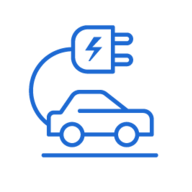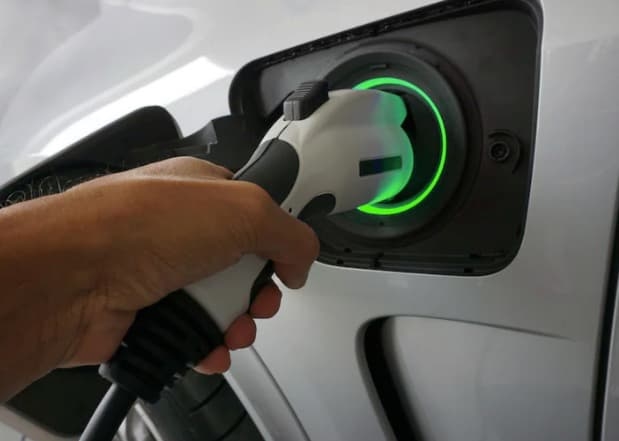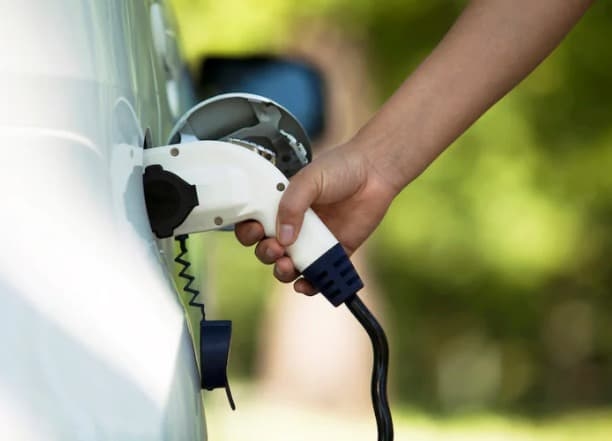Understanding EVs
Understanding EVs
Electric vehicles (EVs) are fun to drive, can be cheaper and easier to maintain than gas-powered vehicles, and contribute fewer emissions into the air. With tax incentives available and a fast-growing network of charging stations, find out if owning an EV is the right choice for you.
Benefits of Driving Electric

Save Big on Fuel
Driving electric offers significant savings compared to traditional gasoline vehicles.

EV Incentives
Incentives and other credits are available to help make driving electric more affordable.

Low Cost to Own
EV owners can expect to spend half as much on maintenance and repair (Consumer Reports)

Fuel Up At Home
Charge while you sleep, work, or at a growing number of public chargers.

Quick and Quiet
Enjoy fast and smooth acceleration, better handling, and a quieter ride.

Best of Both Worlds
Plug-in hybrids provide electric range for short trips and gas-power for longer journeys.
78% of first-time electric owners and 89% of multiple-EV owners would definitely consider purchasing another electric vehicle.
Which EV is Right for Me?

Battery Electric
Fully electric cars offer zero local emissions and offer the biggest potential savings on maintenance and fuel.

Plug-in Hybrid
Plug-in hybrids have a rechargable electric motor and a gas-powered engine to extend range if needed.

Traditional Hybrid
Powered by an electric motor and gas-powered engine, Hybrids recharge as you drive. Tax credits and other benefits may not apply.

Fuel Efficient
These efficent, gas-powered vehicles get over 40MPG and still reduce your emissions and costs.
Owning an EV
Understanding Charging
Charging times vary depending on the type of charger used.
Level 1 chargers use a standard household outlet and charge about 2-5 miles of range per hour, making Level 1 a good choice for plug-in hybrid vehicles but not battery electric vehicles.
Level 2 chargers can be installed at your home by a professional electrician and charge about 10-20 miles of range per hour. A good choice for any EV when charging overnight or all-day is possible.
Level 3 are the fastest and can be found at commercial locations. Level 3 chargers can completely charge a vehicle in less than an hour, making them a great choice for any EV when a quick charge is needed on the go.


Charging from Home
For plug-in hybrid vehicles a standard outlet (Level 1) will be enough for overnight charging. For battery electric vehicles, a Level 2 charger will require professional installation by a licensed electrician. If you live in an apartment or condo, consider talking with the property owner about installing a charger or use a nearby public charger. Talk to our sales staff to find out more about charging from home.
Battery Care
Most batteries will last between 100,000 and 200,000 miles when properly cared for. With battery technology continually advancing, that number will continue to increase. If you can keep your battery between 20% and 80% charged most days and avoid extremely hot temperatures, you can expect your maintenance to be minimal.

Trees For Test Drives
Help Us Plant 100,000 Trees!
GreenCars is planting up to 100,000 trees throughout 2023 across Oregon, Texas, Michigan and Pennsylvania in partnership with the Arbor Day Foundation and Lithia & Driveway (NYSE: LAD).
Test drive an electric, hybrid or fuel-efficient vehicle and we'll plant a tree on your behalf.

Common Questions
What credits and incentives are available?
Up to $7,500 is available from the federal government for purchasers of new electric vehicles , and there is now a credit of up to $4,000 for used electric vehicles, which can make buying an EV even more affordable for some drivers. However, a number of restrictions apply. For instance, there are price caps of $55,000 for cars, and $80,000 for trucks, vans, and SUVs; income caps are also in place.
Also, only vehicles whose final assembly is completed in North America qualify for clean energy vehicle credits.
State, local, and regional authorities offer additional incentives for EV buyers.
Use the GreenCars EV Incentives tool for a personalized look at the most up to date information available.
What other perks are available?
Other advantages of owning an EV include:
- Eligible EVs may also qualify for HOV lane access, which are normally restricted to vehicles with multiple passengers.
- Many electric companies offer lower rates based on the time of use. With EVs, you can save money by charging during off-peak times.
- If you're able to charge from work or home, there's usually no need to stop to refuel like you would in a gas-powered vehicle.
- EVs produce zero tail-pipe emissions resulting in cleaner air and better health
How much will I save on gas?
This will vary depending on the local price of electricity and gas and where you are charging (at home or public charger), but most EV owners can expect to save on fuel cost. A recent Consumer Reports study found the “typical EV owner who does most of their fueling at home can expect to save an average of $800 to $1,000 a year on fueling costs over an equivalent gasoline-powered car.”
Source: Benjamin Preston. October 08, 2020. EVs Offer Big Savings Over Traditional Gas-Powered Cars.
How much will I save on maintenance?
A recent Consumer Reports study found “maintenance and repair costs for EVs are significantly lower over the life of the vehicle - about half - than for gasoline-powered vehicles, which require regular fluid changes and are more mechanically complex. The average dollar savings over the lifetime of the vehicle is about $4,600.”
Source: Benjamin Preston. October 08, 2020. EVs Offer Big Savings Over Traditional Gas-Powered Cars.
How much range do I need?
Gas powered vehicles offer a range of 300-400mi. Battery electric vehicles offer a median range of 250mi. For EV owners who charge at home, this is more than enough for daily use. For longer drives beyond the range of your vehicle, check a public charger map for charger availability along your route.
How long does it take to charge?
Charging time depends on what type of charger is in use:
- Level 1 chargers use a standard household outlet and charge about 2-5 miles of range per hour, making Level 1 a good choice for plugin hybrid vehicles but not battery electric vehicles.
- Level 2 chargers can be installed at your home by a professional electrician and charge about 10-20 miles of range per hour. A good choice for any EV when charging overnight or all-day is possible.
- Level 3 fast chargers are the most efficient and can be found at commercial locations. Level 3 can charge about 60-80 miles of range in about 20 minutes, making it a good choice for any EV when a quick charge is needed on the go.
Can I charge at home?
Yes, Level 1 and Level 2 chargers can be used at home. In fact, the standard 120V outlet supports a Level 1 charger. Level 2 chargers require 240V and can be installed by a licensed electrician. If you do not own your home, you may need to work with your property owner to install a Level 2 charger.
How long does the battery last?
Most batteries will last between 100,000 and 200,000 miles when properly cared for. With battery technology continually advancing, that number should continue to increase.
